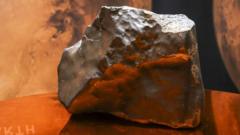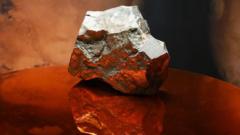Kyoto University researchers aim to assess wood's durability in space, potentially paving the way for its use in colonizing the Moon and Mars.
**First Wooden Satellite in Orbit: A Leap Towards Sustainable Space Exploration**

**First Wooden Satellite in Orbit: A Leap Towards Sustainable Space Exploration**
A groundbreaking solar-powered, wood-panelled satellite has been launched to explore the future of timber in space missions.
The world has seen a significant milestone in space exploration with the launch of the first wooden satellite, LignoSat, designed to test the feasibility of timber as a renewable resource for future missions to extraterrestrial environments like the Moon and Mars. This innovative satellite, weighing merely 900 grams, is en route to the International Space Station via a SpaceX mission, where it will be deployed into orbit around Earth for a duration of six months.
LignoSat's wooden panels, crafted from a particular type of magnolia tree, have been assembled using traditional techniques that forgo screws and glue, emphasizing sustainability and efficiency. Koji Murata, a professor of forest science at Kyoto University, notes that wood can thrive in space conditions devoid of moisture and oxygen that typically contribute to decay. Reflecting on engineering history, Prof. Murata compares the new wooden satellite to early 1900s airplanes that successfully utilized wood in their construction.
The researchers envision a future where wood, potentially grown on celestial bodies like the Moon or Mars, could provide essential materials for constructing habitats for human colonization. In addition to its wooden structure, LignoSat includes aluminum frameworks and electronic components, equipped with sensors to monitor the performance of wood in the extreme space environment over its six-month mission.
Dr. Simeon Barber, a space research scientist from the Open University in the UK, acknowledges the innovative approach of using wood but highlights that LignoSat is not entirely wooden. "While it’s problematic to use wood in critical space applications due to its unpredictable properties, the core idea of utilizing a renewable material like wood is indeed captivating," he commented.
The use of wood in spacecraft is not entirely unprecedented; cork has been used in spacecraft re-entry shells historically. Dr. Barber points out that while wood presents engineering challenges, its use could lead to less pollution compared to traditional metal constructions upon re-entry. However, the trade-off may involve transporting more material initially, which could create additional challenges in terms of weight and space debris.
With the increasing concern over space junk from numerous satellite launches, the research on LignoSat could offer a new direction for sustainable engineering solutions in space exploration. As the quest for sustainable materials intensifies, researchers and scientists are keenly observing how this wooden satellite fared during its mission, aiming to balance exploration with environmental responsibility in the cosmos.
LignoSat's wooden panels, crafted from a particular type of magnolia tree, have been assembled using traditional techniques that forgo screws and glue, emphasizing sustainability and efficiency. Koji Murata, a professor of forest science at Kyoto University, notes that wood can thrive in space conditions devoid of moisture and oxygen that typically contribute to decay. Reflecting on engineering history, Prof. Murata compares the new wooden satellite to early 1900s airplanes that successfully utilized wood in their construction.
The researchers envision a future where wood, potentially grown on celestial bodies like the Moon or Mars, could provide essential materials for constructing habitats for human colonization. In addition to its wooden structure, LignoSat includes aluminum frameworks and electronic components, equipped with sensors to monitor the performance of wood in the extreme space environment over its six-month mission.
Dr. Simeon Barber, a space research scientist from the Open University in the UK, acknowledges the innovative approach of using wood but highlights that LignoSat is not entirely wooden. "While it’s problematic to use wood in critical space applications due to its unpredictable properties, the core idea of utilizing a renewable material like wood is indeed captivating," he commented.
The use of wood in spacecraft is not entirely unprecedented; cork has been used in spacecraft re-entry shells historically. Dr. Barber points out that while wood presents engineering challenges, its use could lead to less pollution compared to traditional metal constructions upon re-entry. However, the trade-off may involve transporting more material initially, which could create additional challenges in terms of weight and space debris.
With the increasing concern over space junk from numerous satellite launches, the research on LignoSat could offer a new direction for sustainable engineering solutions in space exploration. As the quest for sustainable materials intensifies, researchers and scientists are keenly observing how this wooden satellite fared during its mission, aiming to balance exploration with environmental responsibility in the cosmos.


















